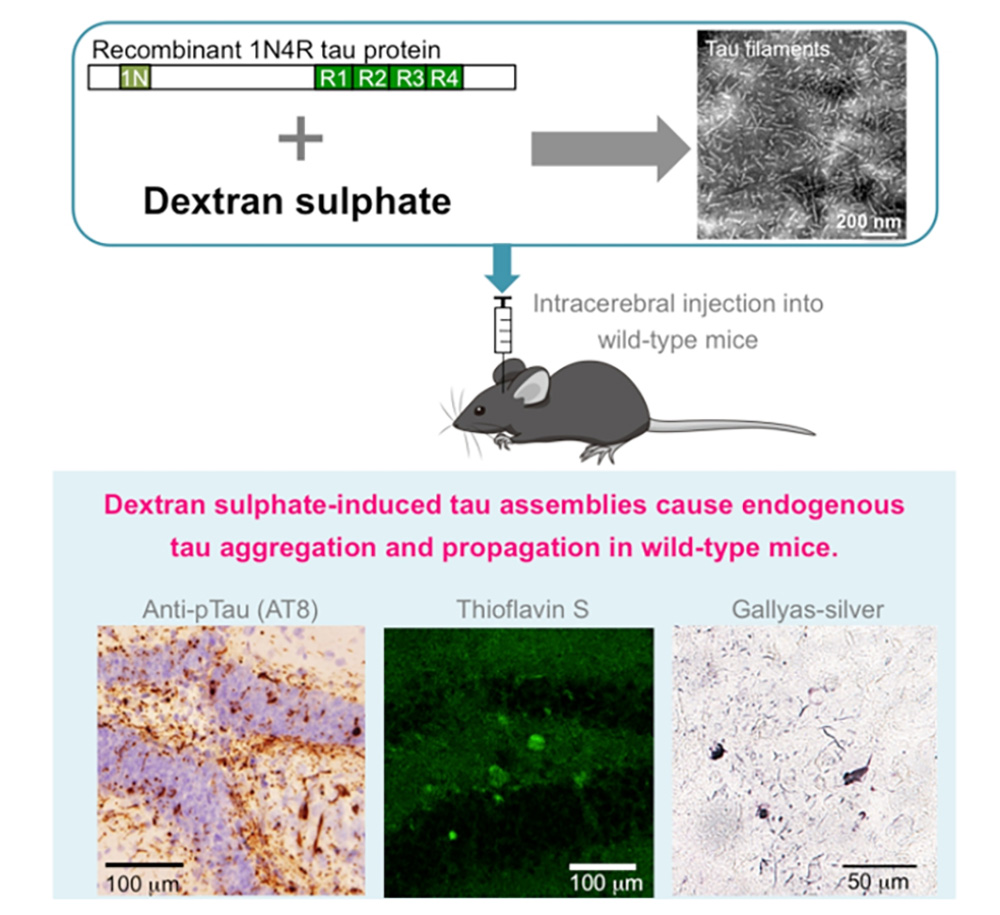
Accumulation of assembled tau protein in the central nervous system is characteristic of Alzheimer’s disease and several other neurodegenerative diseases, called tauopathies.
Researchers at Tokyo Metropolitan Institute of Medical Science (TMIMS) established a new mouse model of tau accumulation and propagation in brain. Single intracerebral injection of synthetic tau filaments induced by dextran sulphate into wild-type mice caused seeding of endogenous tau, followed by spreading to distinct areas in a time-dependent manner.
Accumulation of assembled tau protein in the central nervous system is characteristic of Alzheimer’s disease and several other neurodegenerative diseases, called tauopathies. Recent studies have revealed that propagation of assembled tau is key to understanding the pathological mechanisms of these diseases. Mouse models of tau propagation are established by injecting human-derived tau seeds intracerebrally; nevertheless, these have a limitation in terms of regulation of availability of human samples. To date, no study has shown that synthetic assembled tau induce tau propagation in non-transgenic mice.
A study by researchers from TMIMS confirms that dextran sulphate, a sulphated glycosaminoglycan, induces the assembly of recombinant tau protein into filaments in vitro. As compared to tau filaments induced by heparin, those induced by dextran sulphate were shorter in length, and showed higher thioflavin T fluorescence and lower resistance to guanidine hydrochloride, which suggest that the two types of filaments have distinct conformational features. Unlike other synthetic filament seeds, intracerebral injection of dextran sulphate-induced assemblies of recombinant tau caused aggregation of endogenous murine tau in wild-type mice. Tau accumulation stained with a antibody against phosphorylated tau (AT8) was present at the injection site one month after injection, from where it spread to anatomically connected regions. Induced tau pathologies were also stained by anti-tau antibodies AT100, AT180, 12E8, PHF1, anti-pS396 and anti-pS422. They were thioflavin- and Gallyas-Braak silver-positive, indicative of amyloid. In biochemical analyses, accumulated sarkosyl-insoluble and hyperphosphorylated tau was observed in the injected mice.
In conclusion, this study revealed that intracerebral injection of synthetic full-length wild-type tau seeds prepared in the presence of dextran sulphate caused tau propagation in non-transgenic mice. These findings establish that propagation of tau assemblies does not require tau to be either mutant and/or overexpressed.

A new mouse model of tau propagation established by Masuda-Suzukake at TMIMS and her colleagues. Intracerebral injection of synthetic tau filaments induced by dextran sulphate caused tau aggregation in wild-type mice. (Masuda-Suzukake et al., Brain Communications 2020).